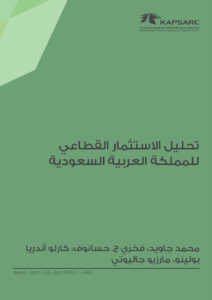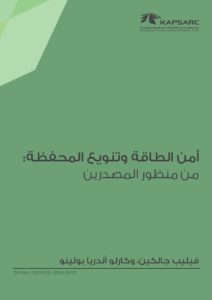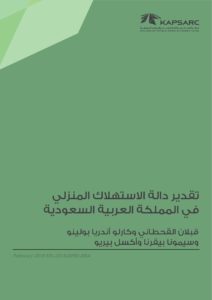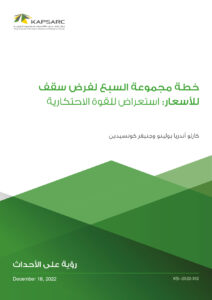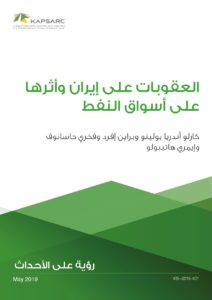كارلو أندريا باحث زائر في كابسارك، وأستاذ اقتصاد في جامعة بيروغيا، وأستاذ اقتصاديات الطاقة في جامعة LUISS في روما. وهو حاصل على درجة الدكتوراه في الاقتصاد من جامعة بنسلفانيا، حيث أشرف عليه الأستاذ الحائز على جائزة نوبل لورنس كلاين. وقد كان باحثًا زائرًا في كابسارك منذ عام 2015، يركز على التحليل الاقتصادي القياسي وإصلاح أسواق الكهرباء وتحليل سياسات تغير المناخ. وهو أستاذ زائر في جامعة برلين للتكنولوجيا بألمانيا، والرئيس (الفخري) للجمعية الإيطالية لاقتصاديات الطاقة. وكان رئيس الجمعية الدولية لاقتصاديات الطاقة في عام 2008، ورئيس الوكالة الإيطالية للطاقة المتجددة، ورئيس شبكة النقل الكهربائي الإيطالية، ومستشار وزير الصناعة ووزارة الخزانة الإيطالية في شؤون الطاقة، وكبير الاقتصاديين في بنك إيطاليا، وباحث مشارك في مشروع للأمم المتحدة. وقدم إحاطات في مجلس الشيوخ والبرلمان في إيطاليا، وقدم تقارير تقنية وسياساتية للحكومات المختلفة حول تحرير أسواق الكهرباء وتطورات الطاقة المتجددة.

How Total Factor Productivity Drives Long-Run Energy Consumption in Saudi Arabia
In this study, we investigate how total factor productivity (TFP), alongside income, price, and population, shapes energy consumption in the long-run in Saudi Arabia, the world’s number one oil exporter. To do so, we first estimate a production function and construct the associated TFP series, and then assess TFP’s impact on energy consumption. To take into consideration the stochastic properties of the variables, we employ unit root and cointegration methods. We also correct estimations and test results for potential small sample bias. Our main finding is that TFP has a statistically significant impact on energy consumption in the long-run. https://link.springer.com/chapter/10.1007%2F978-3-030-06001-5_8
21st مايو 2019
